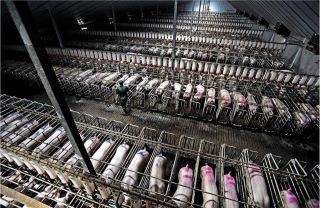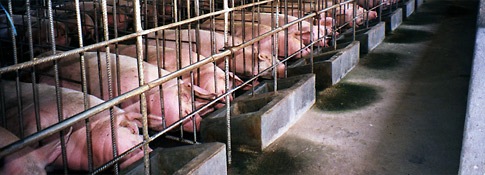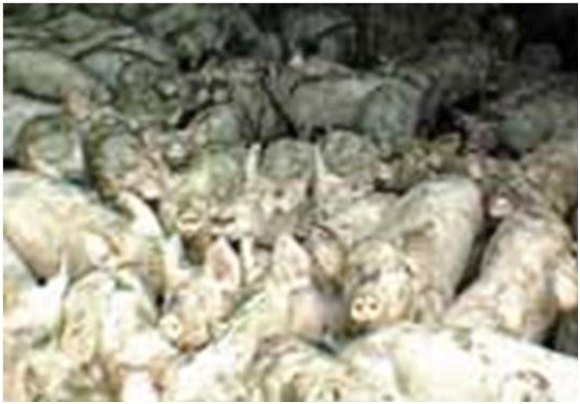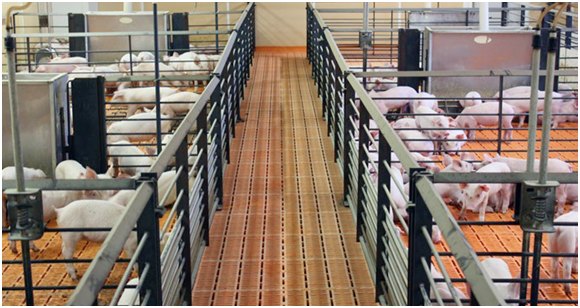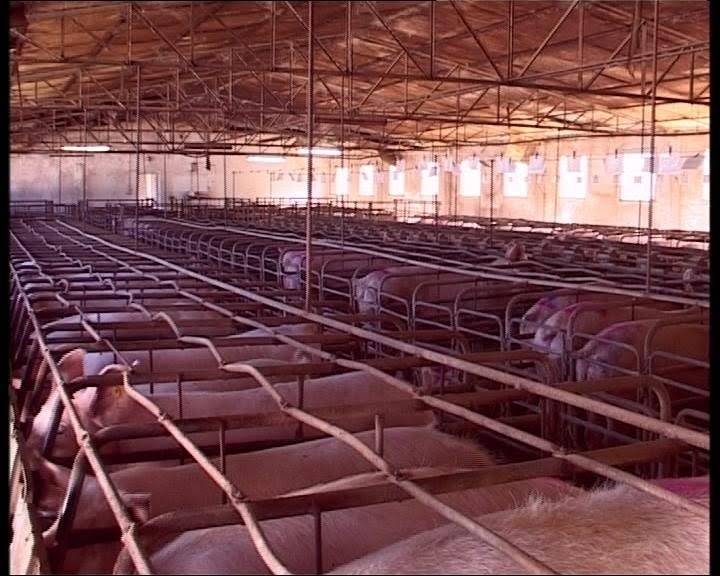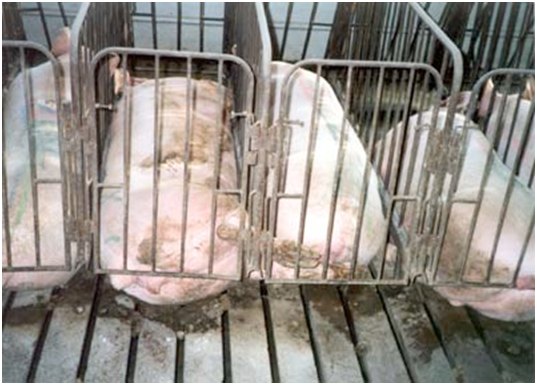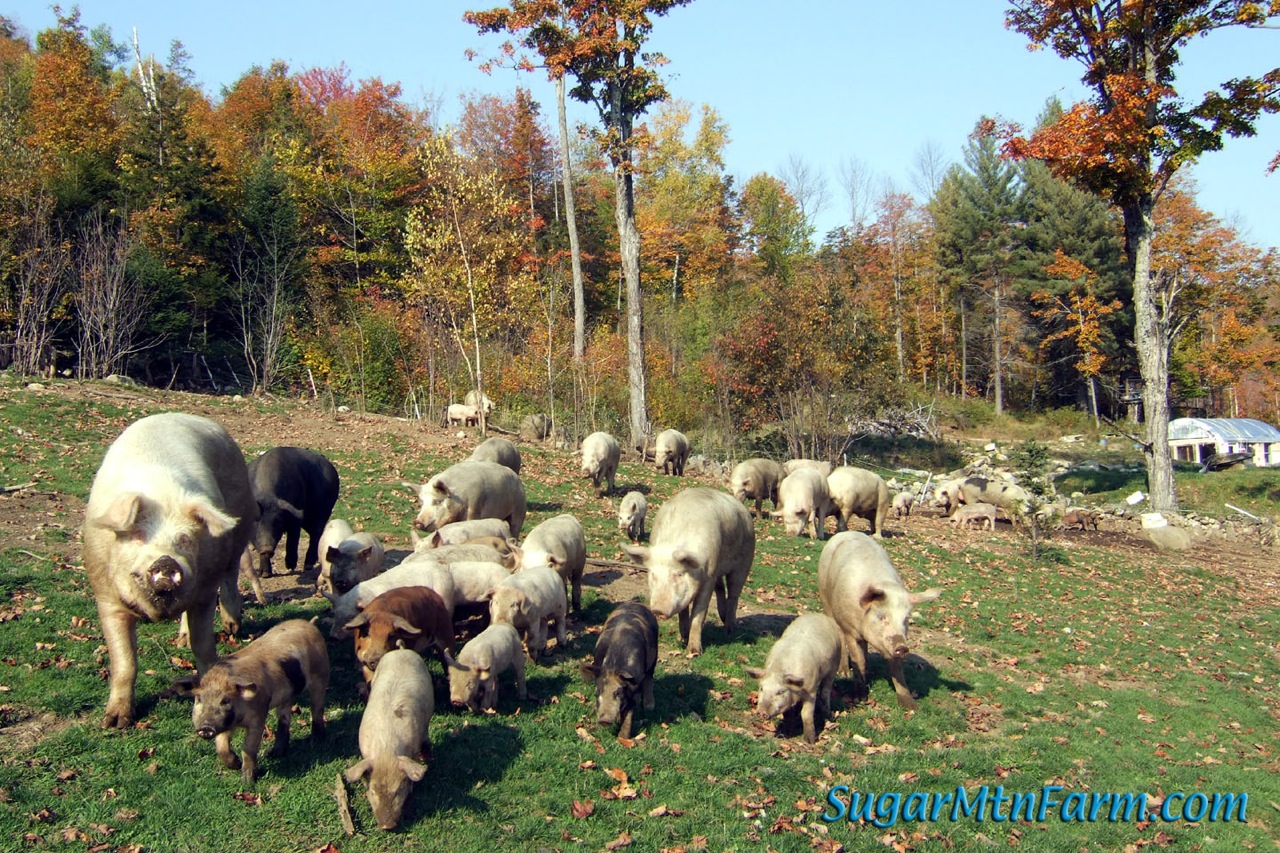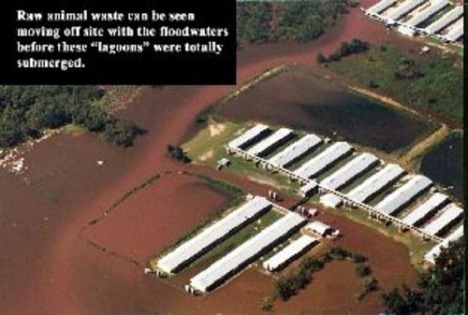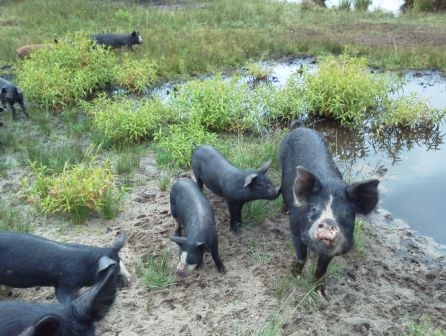The Feral Pig “Problem” - Part III
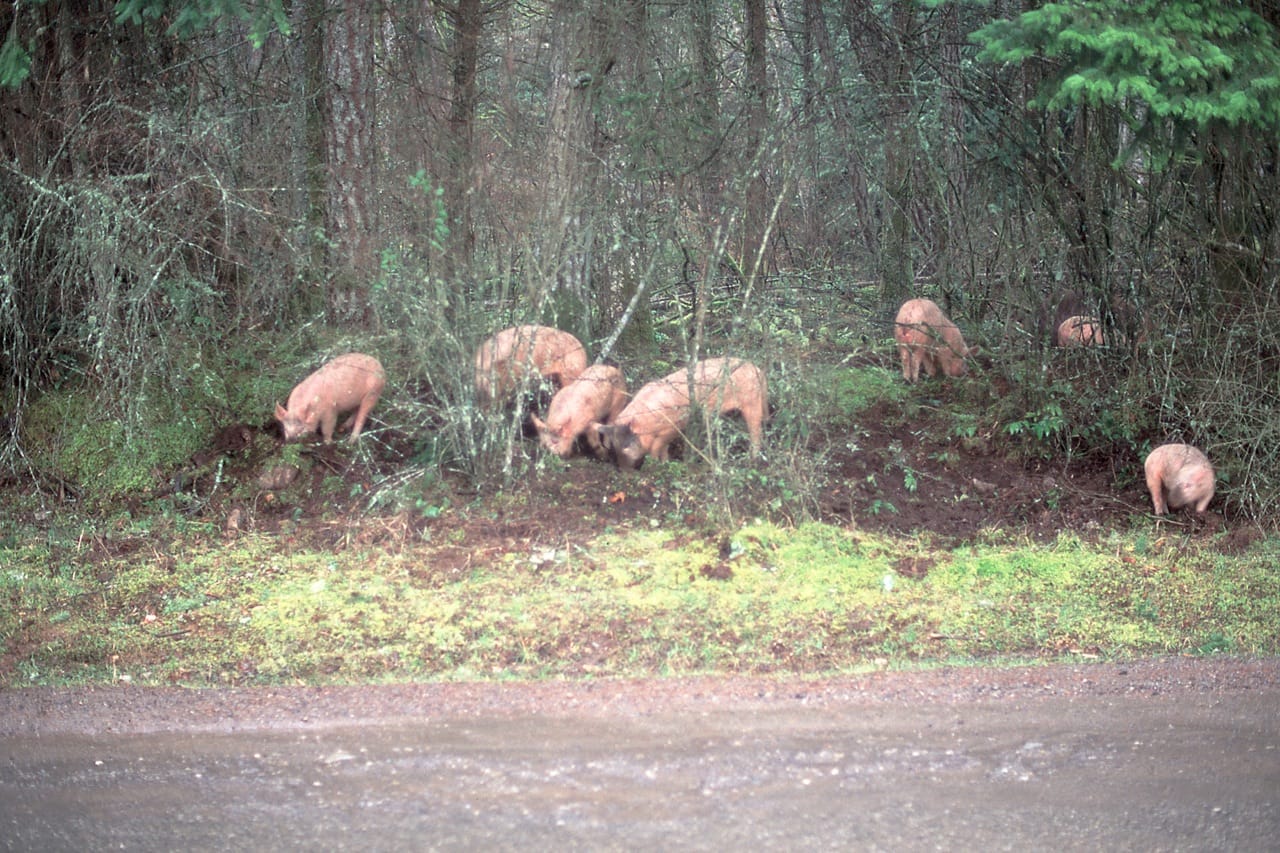
Part I:
Background
Part II:
A Brief History of Pigs, Pork and People
Part III:
The Growth of “Efficient” Factory Farms
* Animal Cruelty
* Big Pig’s Version
* The “Rest of the Story” from Forbes Magazine
* Pig Factories are Filthy
Part IV:
Meat Factory Pollution and Public Health
Part V:
References and Comments
Author’s Note: Of the many wildlife problems we struggle with in Texas, feral pigs are one of the most difficult. This five-part series examines this pig “problem.” It asks some common sense questions, offers plain talk about the pig raising ethics, pork safety, and feral pig eradications and suggests solutions that in my opinion are self-evident once the true pig problem is identified.
I regret if these remarks offend friends who, like many, are uncomfortable with criticisms of Big Wildlife and Big Food.
Part III
The Growth of “Efficient” Factory Farms
Big Meat propaganda says we must have industrial production of pigs in order to supply the market. That is not true. There are roughly 60 million hogs in inventory in the U.S. today, about the same as in 1915. What is different is that the industry has taken production away from the traditional family farmer and turned it over to Big Food.
From 1980 to 2011, the number of hog operations in the U.S. dropped from 666,000 to roughly 69,000, yet the number of hogs sold remains almost the same.
About 70 percent of U.S. beef cattle come from farms with at least 5,000 head of cattle.
Ten large companies produce more than 90 percent of the nation’s poultry.
In pork, while the largest 1.5 percent of producers has over 60 percent of the market, the smallest 50 percent have less than 1 percent. And the large producers are subsidiaries of even larger agribusiness cartel members.
Cartels are increasingly trans-national. The Chinese giant Shaunghui now owns Smithfield Foods, the largest pork producer.
Food production is actually hampered by these concentrations. Wherever found, monopoly concentrations are inefficient, and wasteful. Monopolistic industries treat workers badly and customers worse, and at the end of the day are unprofitable without (and often even with) protection and subsidies.
One can hardly overstate the dangers that agricultural concentrations pose, and yet most of us simply do not realize the degree to which this has occurred. Concentrations of 80 percent are common in grain production, meat production and processing, seed patenting (historically illegal in the U.S. until 30years ago) herbicides, fertilizers and pharmaceuticals. Probably 75 percent of U.S. food production is in a few hands and 100 percent of huge swaths are.
Animal Cruelty
Since the 1960s, pig keeping in most industrialized countries has moved rapidly toward maximizing production efficiency. A primary casualty in this production shift is ethical animal husbandry.
Animals are injected with growth hormones and spend their short lives within buildings in near darkness.
Artificially inseminated sows (a technology that appeared in 1932) farrow in narrow steel cages.
Piglets are removed early from their mother so that lactation ceases and her sexual receptivity is reactivated. In four months, another litter is produced.
Piglets have their incisors removed, tails docked, ears notched, and in the case of males, their testes excised.
Most pigs never reach their eighth month, although theoretically the animal can live about 15 years.
Treatment of pigs in the monopoly process is so repulsive that it is unfit for discussion in polite company. (These practices coarsen the sensibilities of all participants and spill over to wildlife practices in aerial gunning, and soon, poisoning of pigs.) Small ranchers or farmers would not treat livestock this way. Doing so, would break animal cruelty laws, from which the monopolies, with the approval of bureaucracies and universities, have been exempted.
Modern hog raising seeks to emulate the efficiency levels of the poultry industry. In that quest, its technological center in the United States has shifted from the Midwest to a belt of large corporate farms in eastern North Carolina.
Big Pig’s Version (as pictured here): “Technological innovations, such as raising pigs indoors and early weaning, have contributed to structural change in the pork industry. Indoor facilities allow one person to effectively manage the comfort and performance of more pigs. Early weaning protects young pigs from being infected with diseases carried by their mother, allows for more efficient use of space and maximizes the productive potential of sows and workers. All of these factors contribute to lower-cost pork for consumers.”
The Rest of the Story, from Forbes Magazine: http://www.forbes.com/sites/jamesmcwilliams/2013/10/30/u-s-pork-wallows-in-dangerous-antibiotics-pollution-welfare-violations/
” What happens inside pork facilities is horrifying in a different sort of way. Pigs – remarkably intelligent and emotionally aware creatures – are routinely abused in ways that no conscientious consumer, if she knew the details, would tolerate.
A recent undercover investigation into a Pipestone, Minnesota supplier of Walmart pork released footage of workers ‘slamming piglets headfirst into the ground and leaving them to slowly suffer and die,’ ‘sick and injured pigs with severe, bleeding wounds or infections left to suffer without veterinary care,’ and ‘workers ripping out the testicles and slicing off the tails of fully conscious piglets without the use of any painkillers.’ Awful. These abuses are routine in pork production. They are, by any ethical standard, unconscionable.”
Pig Factories are Filthy
Big Meat says that free-range pigs are dirty and do environmental damage. Compared to what? Free-range pigs do none of the damage described below.
Continuing from Forbes: “No matter how you slice it, pork is nasty business. Ecologically, ethically, and in terms of human health, it’s a global pursuit that threatens to undermine otherwise noble efforts to design humane and environmentally sound food systems. A closer look into how the sausage is made provides a sobering reminder that the future of food, if it’s going to be just, cannot involve the mass production of animals.
Pork production generates more greenhouse gas emissions (GHG) than any other animal product besides beef, cheese, and lamb. In addition to the GHG output there are serious concerns related to water and air quality. U.S. pork production facilities underwent unprecedented consolidation in the 1990s, dropping to just under 100,000 operations from 650,000 in 1980. Density closely accompanied this consolidation.
In North Carolina, the second largest hog producing state in the nation, the hog population grew from 900,000 to 5 million in just eight years. All these pigs poop in the same place.
Manure from these confined facilities is summarily liquefied and stored in open-pit lagoons that typically hold around 400,000 gallons of poop soup. Pig manure emits into the atmosphere 160 odiferous compounds, many of which (such as hydrogen sulfide and ammonia) directly endanger human health. Others befoul rural environments to such an extreme extent that vast regions of the countryside become uninhabitable.
Ruptured lagoons have led to massive fish kills while steady seepage from the tiniest of leaks have destroyed aquatic ecosystems. According to the National Resources Defense Council, ‘opportunities for disaster abound.’ Theoretically, lagoons can be safe and secure structures, and even relatively odor free. But they still deplete large amounts of groundwater – water that could otherwise be reserved for the increasingly radical use of quenching human thirst.”
According to Big Food these factories are humane, environmentally safe, and their pork wholesome, whereas open ranges and free-roaming ‘feral’ pigs are dirty. If they are to be believed dirt, like beauty, must be in the eye of the beholder. And, in this case, Big Food has chosen to turn a collective blind eye toward the filth and environmental degradation.

